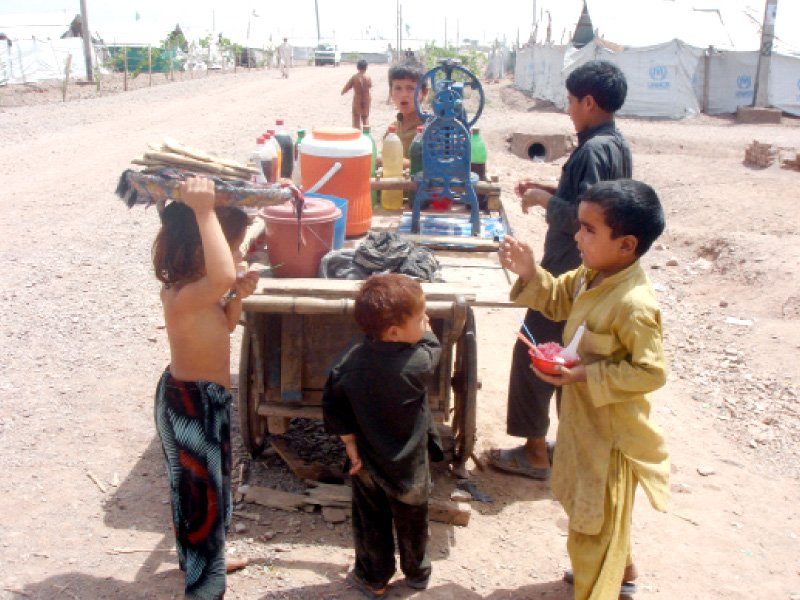
This was revealed in an annual report, Accountability for Maternal, Newborn and Child Survival- The 2013 Update, launched at Women Deliver - the third global conference on women’s rights, concluded recently in Kuala Lumpur, Malaysia. Launched by Countdown to 2015, a global movement of academies, governments and international agencies, the report also highlight countries’ achievements in increasing coverage of key interventions and identifies remaining challenges many countries face in reaching all women and children life-saving services such as undernutrition, equity as core component of all health strategies and levels of fertility and the unmet need for family planning.

The MDG targets calculated by Countdown to 2015 which Pakistan should aim for is to reduce maternal mortality rate to 123 deaths per 100,000 live births and under-five mortality ratio to 41 deaths per 1,000 live births by 2015. According to the report, the demand for family planning is 54%, antenatal care is 28%, postnatal care is 39% and for exclusive breastfeeding practices is 37%. Around 32% children below five years of age are underweight and 44% are stunted.
The under-five mortality rate in 1990 was 122 deaths per 1,000 live births which declined to 72 deaths per 1,000 live births in 2011. The average annual rate of reduction of under-five mortality rate remained 2.5 %, while it was 3.0 % for the maternal mortality rate from 1990 to 2010.
Recommendations
To reduce maternal mortality the report recommends Pakistan continue efforts to increase coverage of high-quality services including family planning, antenatal and postnatal care, skilled delivery and emergency obstetric care.
To reduce under-five mortality rate, there is a need for huge investment in health services for pregnant women and the newborn baby, including the prevention of preterm births and stillbirths and scale-up of effective low-cost interventions, it stated.

Movements to integrate nutrition initiatives into national reproductive, maternal, newborn and child health programmes must continue to be prioritised in all these countries.
Talking to The Express Tribune, Rutgers World Population Fund Country Representative for Pakistan Qadeer Baig said the slow progress in achieving MDGs 4 and 5 was due to the inefficiency of the health system and extremely low investment in maternal and child health.
“Lets see how the new government will tackle this issue and how a new framework would be developed to replace MDGs after 2015,” he said. Pathfinder International Director Programmes Dr Haris Ahmed added that funding allocation was inconsistent with the national requirement of MDGs.
Published in The Express Tribune, June 10th, 2013.
COMMENTS (1)
Comments are moderated and generally will be posted if they are on-topic and not abusive.
For more information, please see our Comments FAQ
1731570357-0/elon-musk-(1)1731570357-0-405x300.webp)
-(1)1717678110-0/Kendrick-(1)-(1)1717678110-0-165x106.webp)





1725254039-0/Untitled-design-(24)1725254039-0-270x192.webp)
1732449527-0/Express-Tribune-(4)1732449527-0-270x192.webp)
1732441230-0/BeFunk_§_]__-(49)1732441230-0.jpg)







Having lived in Islamabad for almost two years, I now realize that health care needs a better form in the rural parts as well as metropolitan as the increasing number of malnutrition deaths is seriously worrying.
I think looking at the figures shared in the report; we cannot say it’s a significant progress. If we look at the previous trend and we compare that trend with upcoming years till 2015, I don’t think so Pakistan will be able to event fall near the MDG targets.
It essentially shows lack of coordinated effort by various government institutions with active support from social organizations that are focusing on child welfare. We need to streamline our efforts with a holistic approach. I think a country like Pakistan cannot tolerate such a high number of deaths purely due to shortage of basic needs like food. I would also like to add here saying that the living conditions of many thousands of children are very poor and it requires government support in every facet. There should not be any compromise on this, and blaming each other is no way finding a solution to it. The modern world has many challenges on the health aspect and Pakistan obviously has not ample resources to address this concern, but still we can get better results with wise allocation, disbursement and utilization of available funds. Let’s make use of them.